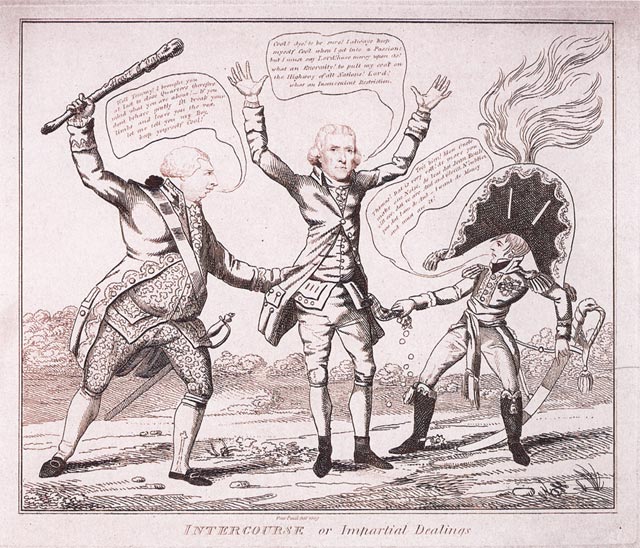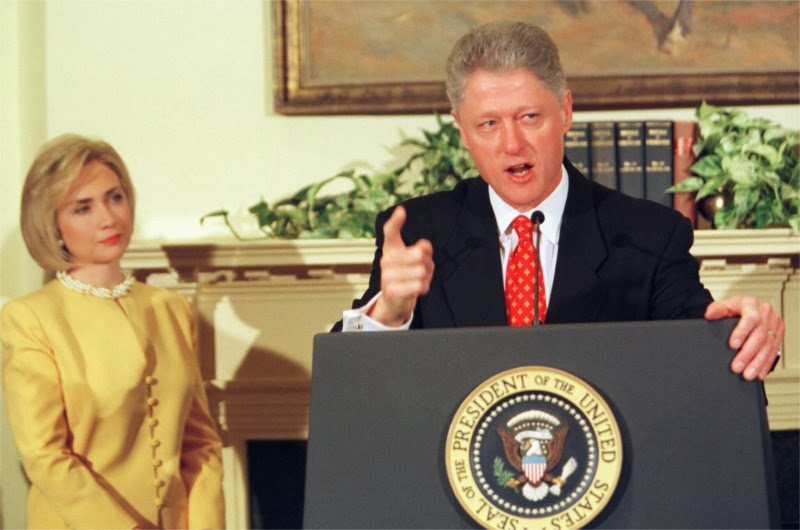This Day In History
Deadlock over presidential election ends

After one tie vote in the Electoral College and 35 indecisive ballot votes in the House of Representatives, Vice President Thomas Jefferson is elected the third president of the United States over his running mate, Aaron Burr. The confusing election, which ended just 15 days before a new president was to be inaugurated, exposed major problems in the presidential electoral process set forth by the framers of the U.S. Constitution.
As dictated by Article Two of the Constitution, presidents and vice presidents are elected by “electors,” a group of voters chosen by each state in a manner specified by that state’s legislature. The total number of electors from each state is equal to the number of senators and representatives that state is entitled to in Congress. In the first few presidential elections, these electors were chosen by popular vote, legislative appointment, or a combination of both (by the 1820s, almost all states adopted the practice of choosing electors by popular vote). Each elector voted for two people; at least one of who did not live in their state. The individual receiving the greatest number of votes would be elected president, and the next in line, vice president.
A majority of electors was needed to win election, thus ensuring consensus across states. Because each elector voted twice, it was possible for as many as three candidates to tie with a majority–in which case the House of Representatives was to vote a winner from among the tied candidates. If no majority was achieved in the initial electoral vote, the House was to decide the winner from the top five candidates. In both cases, representatives would not vote individually but by state groups. Each state, no matter what its number of representatives, would be entitled to just one vote, and a majority of these votes was needed to elect a candidate president.
In the nation’s first presidential election, in 1789, George Washington was unanimously elected, and John Adams–his unofficial running mate–came in second in electoral votes, making him vice president. Both men were conservative and favored a strong federal government as established by the Constitution. To balance his Cabinet with a liberal, and thus maintain the widest possible support for the new American government, Washington chose Thomas Jefferson–the idealistic drafter of the Declaration of Independence–as secretary of state.
During Washington’s first administration, Jefferson often came into conflict with Alexander Hamilton, the secretary of the treasury. Jefferson objected to Hamilton’s efforts to strengthen the national government at the expense of the states, and the two men also differed significantly on foreign policy, with Hamilton advocating improved relations with conservative England and Jefferson calling for closer ties with Revolutionary France. Although Washington detested the factional fighting, the disagreements gave rise to the nation’s first political parties: Jefferson’s Democratic-Republicans (the forerunner of the Democratic Party) and Hamilton’s Federalists.
In 1792, Washington was unanimously re-elected president, and Adams was re-elected vice president. Jefferson, his relations with Hamilton greatly deteriorated, resigned as secretary of state in 1793.
In 1796, Jefferson ran for president as the candidate of the Democratic-Republicans, and Adams, as the Federalist candidate. When the results of the election were tallied, it became clear that the nation’s forefathers had failed to properly anticipate the rise of political parties. Adams won the election with 71 votes, but his Federalist running mate, Thomas Pinckney, received only 59 votes, nine less than Thomas Jefferson, who was elected vice president. Jefferson’s running mate, Senator Aaron Burr of New York, received only 30 votes.
As vice president, Jefferson dedicated himself to his constitutional duty of presiding over the Senate and wrote the Manual of Parliamentary Practice, a book of congressional rules. He had little contact with the Adams administration. Meanwhile, tensions rose with France over U.S.-British trade, leading Congress to pass the Alien and Sedition Act, which restricted U.S. citizenship and prohibited public criticism of the president or the government of the United States. Jefferson viewed the acts as the confirmation of the kind of federal tyranny he feared and left Philadelphia for Monticello in 1798 to pen the Kentucky Resolutions in response. He soon returned to the U.S. capital to carry on his duties in the Senate.
In the election of 1800, Jefferson and Burr again took on Adams and Pinckney. By this time, America’s political tide was sweeping away from the conservative Federalists to Jefferson’s more democratic party. In addition, Adams was hampered in his re-election bid by Alexander Hamilton, who advocated the election of Pinckney as president and Adams as vice president. On November 4, the national election was held. When the electoral votes were counted, the Democratic-Federalists emerged with a decisive victory, with Jefferson and Burr each earning 73 votes to Adams’ 65 votes and Pinckney’s 64 votes. John Jay, the governor of New York, received 1 vote.
Because Jefferson and Burr had tied, the election went to the House of Representatives, which began voting on the issue on February 11, 1801. What at first seemed but an electoral technicality–handing Jefferson victory over his running mate–developed into a major constitutional crisis when Federalists in the lame-duck Congress threw their support behind Burr. Jefferson needed a majority of nine states to win, but in the first ballot had only eight states, with Burr winning six states and Maryland and Virginia. Finally, on February 17, a small group of Federalists reasoned that the peaceful transfer of power required that the majority party have its choice as president and voted in Jefferson’s favor. The 35th ballot gave Jefferson victory with 10 votes. Burr received four votes and two states voted blank.
Thomas Jefferson was inaugurated the third president of the United States on March 4. Three years later, the 12th Amendment to the U.S. Constitution, providing for the separate election of presidents and vice presidents, was ratified and adopted.
Under Jefferson, the power of the federal government was reduced but never to such a degree that it threatened the unity of the United States. The crowning achievement of his two terms in office was the Louisiana Purchase, an unprecedented executive action in which Jefferson violated his own constitutional scruples in the name of doubling the size of the United States.
Aaron Burr was denied renomination by his party for the office of vice president in February 1804, and George Clinton of New York was chosen in his place. Several months later, Burr challenged his long-time political antagonist Alexander Hamilton to a duel and shot him dead. In 1807, he was put on trial for treason after being accused of plotting to establish an independent republic in the American Southwest. He was acquitted and eventually resumed his law practice in New York.
Thomas Jefferson and John Adams both died on July 4, 1826–the 50th anniversary of the Declaration of Independence. Adams’ last words were “Thomas Jefferson still survives,” though his old political adversary had died a few hours before.
– History.com Staff
Click HERE for more.
This Day In History
Truman announces development of H-bomb

U.S. President Harry S. Truman publicly announces his decision to support the development of the hydrogen bomb, a weapon theorized to be hundreds of times more powerful than the atomic bombs dropped on Japan during World War II.
Five months earlier, the United States had lost its nuclear supremacy when the Soviet Union successfully detonated an atomic bomb at their test site in Kazakhstan. Then, several weeks after that, British and U.S. intelligence came to the staggering conclusion that German-born Klaus Fuchs, a top-ranking scientist in the U.S. nuclear program, was a spy for the Soviet Union. These two events, and the fact that the Soviets now knew everything that the Americans did about how to build a hydrogen bomb, led Truman to approve massive funding for the superpower race to complete the world’s first “superbomb,” as he described it in his public announcement on January 31.
On November 1, 1952, the United States successfully detonated “Mike,” the world’s first hydrogen bomb, on the Eniwetok Atoll in the Pacific Marshall Islands. The 10.4-megaton thermonuclear device, built upon the Teller-Ulam principles of staged radiation implosion, instantly vaporized an entire island and left behind a crater more than a mile wide. The incredible explosive force of Mike was also apparent from the sheer magnitude of its mushroom cloud–within 90 seconds the mushroom cloud climbed to 57,000 feet and entered the stratosphere. One minute later, it reached 108,000 feet, eventually stabilizing at a ceiling of 120,000 feet. Half an hour after the test, the mushroom stretched 60 miles across, with the base of the head joining the stem at 45,000 feet.
Three years later, on November 22, 1955, the Soviet Union detonated its first hydrogen bomb on the same principle of radiation implosion. Both superpowers were now in possession of the “hell bomb,” as it was known by many Americans, and the world lived under the threat of thermonuclear war for the first time in history.
Source: https://www.history.com/this-day-in-history/truman-announces-development-of-h-bomb
This Day In History
Gandhi assassinated

Mohandas Karamchand Gandhi, the political and spiritual leader of the Indian independence movement, is assassinated in New Delhi by a Hindu extremist.
Born the son of an Indian official in 1869, Gandhi’s Vaishnava mother was deeply religious and early on exposed her son to Jainism, a morally rigorous Indian religion that advocated nonviolence. Gandhi was an unremarkable student but in 1888 was given an opportunity to study law in England. In 1891, he returned to India, but failing to find regular legal work he accepted in 1893 a one-year contract in South Africa.
Settling in Natal, he was subjected to racism and South African laws that restricted the rights of Indian laborers. Gandhi later recalled one such incident, in which he was removed from a first-class railway compartment and thrown off a train, as his moment of truth. From thereon, he decided to fight injustice and defend his rights as an Indian and a man. When his contract expired, he spontaneously decided to remain in South Africa and launched a campaign against legislation that would deprive Indians of the right to vote. He formed the Natal Indian Congress and drew international attention to the plight of Indians in South Africa. In 1906, the Transvaal government sought to further restrict the rights of Indians, and Gandhi organized his first campaign of satyagraha, or mass civil disobedience. After seven years of protest, he negotiated a compromise agreement with the South African government.
In 1914, Gandhi returned to India and lived a life of abstinence and spirituality on the periphery of Indian politics. He supported Britain in the First World War but in 1919 launched a new satyagraha in protest of Britain’s mandatory military draft of Indians. Hundreds of thousands answered his call to protest, and by 1920 he was leader of the Indian movement for independence. He reorganized the Indian National Congress as a political force and launched a massive boycott of British goods, services, and institutions in India. Then, in 1922, he abruptly called off the satyagraha when violence erupted. One month later, he was arrested by the British authorities for sedition, found guilty, and imprisoned.
Source: https://www.history.com/this-day-in-history/gandhi-assassinated
This Day In History
U.S. Baseball Hall of Fame elects first members

On January 29, 1936, the U.S. Baseball Hall of Fame elects its first members in Cooperstown, New York: Ty Cobb, Babe Ruth, Honus Wagner, Christy Matthewson and Walter Johnson.
The Hall of Fame actually had its beginnings in 1935, when plans were made to build a museum devoted to baseball and its 100-year history. A private organization based in Cooperstown called the Clark Foundation thought that establishing the Baseball Hall of Fame in their city would help to reinvigorate the area’s Depression-ravaged economy by attracting tourists. To help sell the idea, the foundation advanced the idea that U.S. Civil War hero Abner Doubleday invented baseball in Cooperstown. The story proved to be phony, but baseball officials, eager to capitalize on the marketing and publicity potential of a museum to honor the game’s greats, gave their support to the project anyway.
In preparation for the dedication of the Hall of Fame in 1939—thought by many to be the centennial of baseball—the Baseball Writers’ Association of America chose the five greatest superstars of the game as the first class to be inducted: Ty Cobb was the most productive hitter in history; Babe Ruth was both an ace pitcher and the greatest home-run hitter to play the game; Honus Wagner was a versatile star shortstop and batting champion; Christy Matthewson had more wins than any pitcher in National League history; and Walter Johnson was considered one of the most powerful pitchers to ever have taken the mound.
Today, with approximately 350,000 visitors per year, the Hall of Fame continues to be the hub of all things baseball.
Source: https://www.history.com/this-day-in-history/u-s-baseball-hall-of-fame-elects-first-members
-

 NEWS2 years ago
NEWS2 years ago2 hurt, 1 jailed after shooting incident north of Nocona
-

 NEWS1 year ago
NEWS1 year agoSuspect indicted, jailed in Tia Hutson murder
-

 NEWS2 years ago
NEWS2 years agoSO investigating possible murder/suicide
-

 NEWS2 years ago
NEWS2 years agoWreck takes the life of BHS teen, 16
-

 NEWS2 years ago
NEWS2 years agoMurder unsolved – 1 year later Tia Hutson’s family angry, frustrated with no arrest
-

 NEWS2 years ago
NEWS2 years agoSheriff’s office called out to infant’s death
-

 NEWS2 years ago
NEWS2 years agoBowie Police face three-hour standoff after possible domestic fight
-

 NEWS2 years ago
NEWS2 years agoDriver stopped by a man running into the street, robbed at knifepoint










